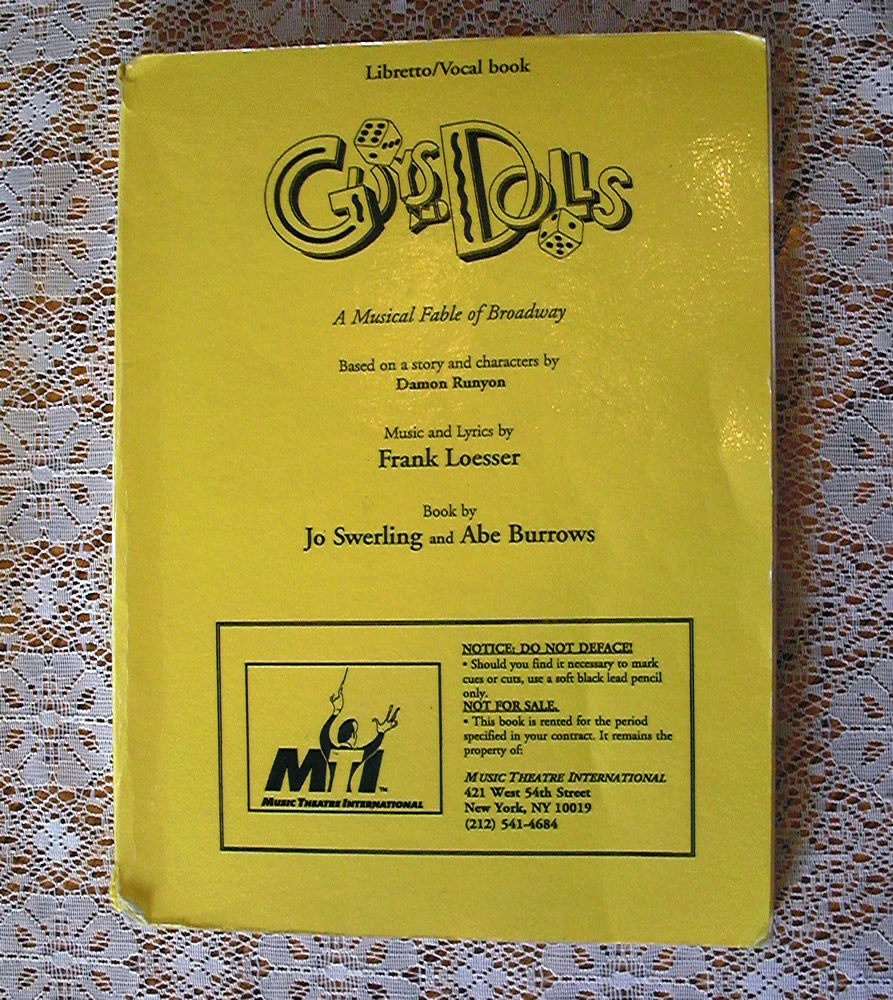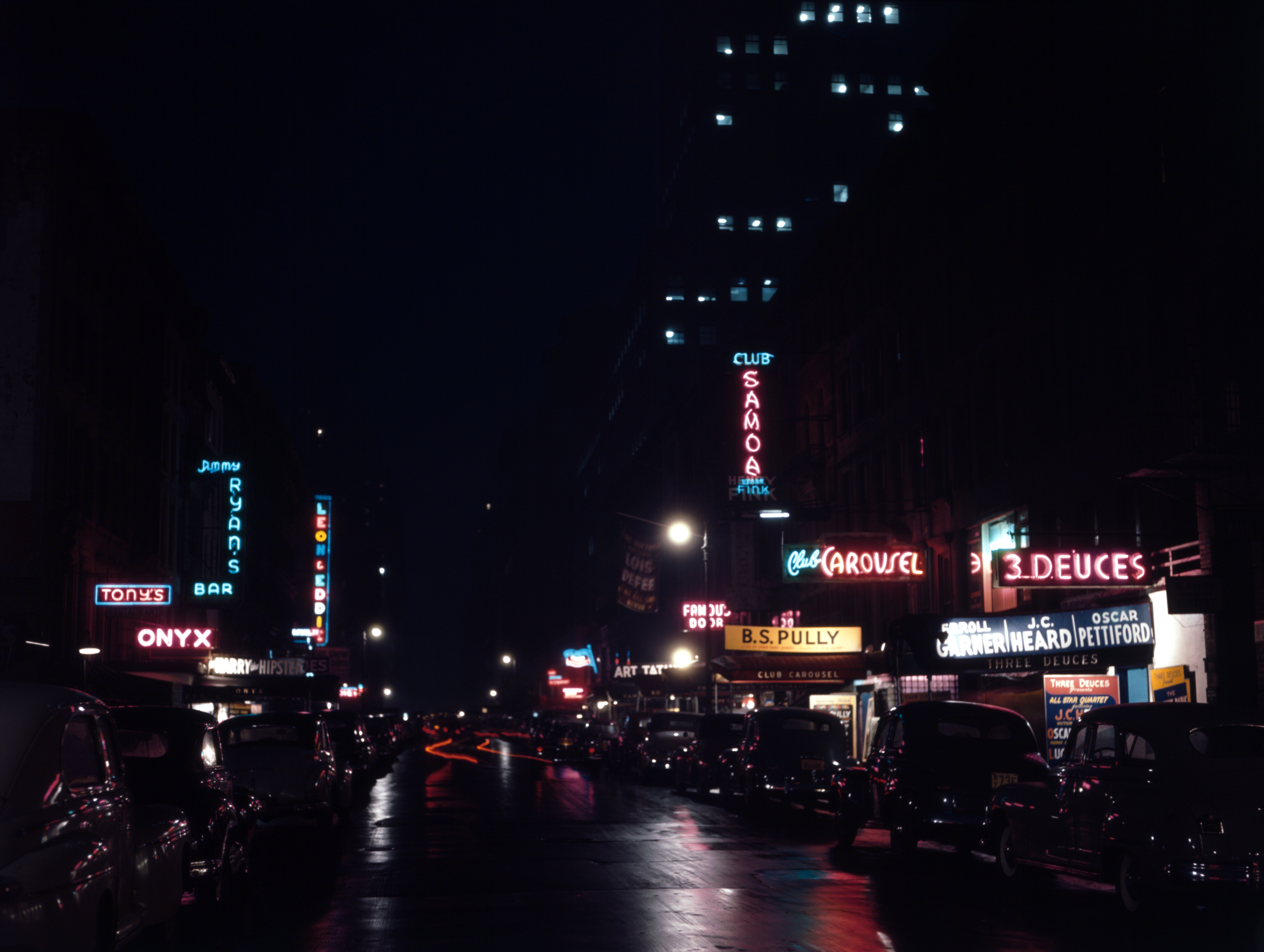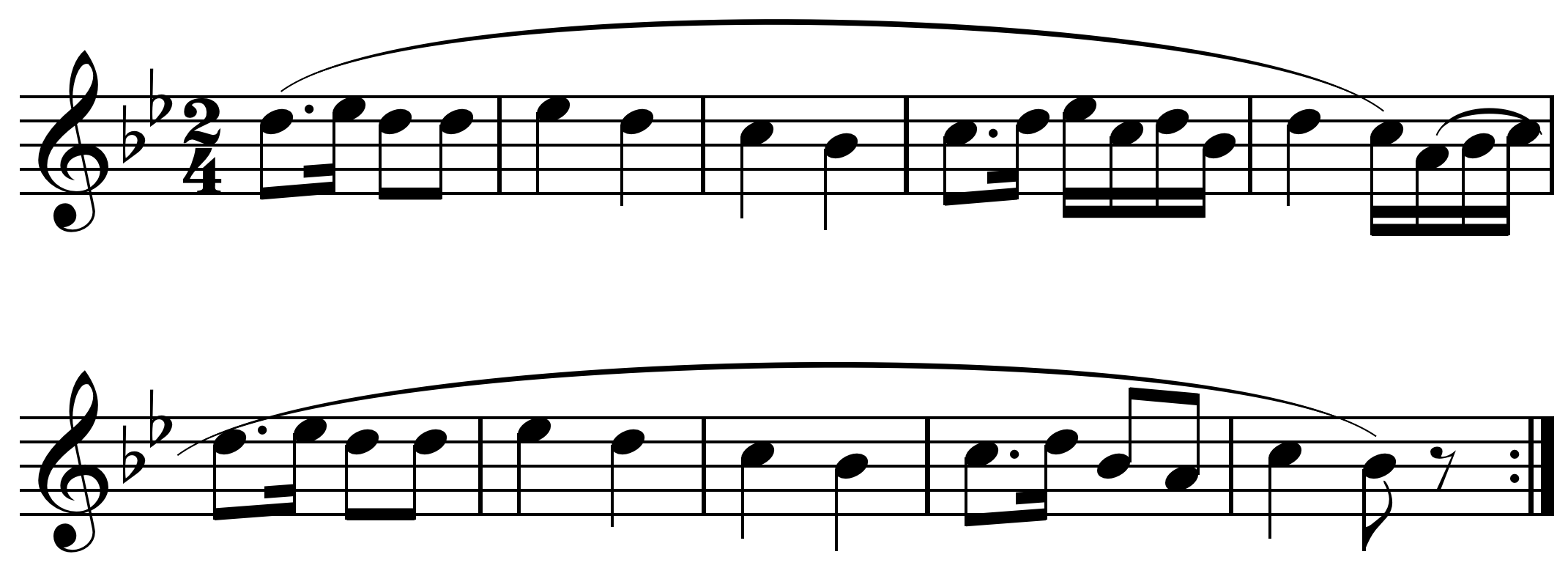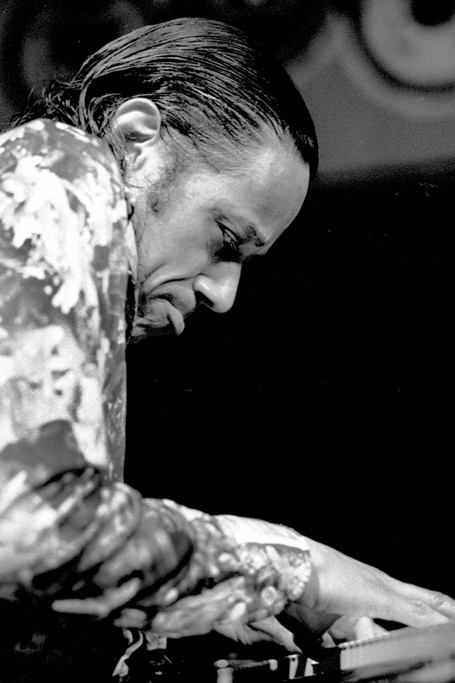|
Jazz At The Plaza Vol. I
''Jazz at the Plaza Vol. I'' is a live album by The Miles Davis Sextet. It was recorded in 1958 and released in 1973 by Columbia Records. Duke Ellington was recorded at the same event and released as the second volume ''( Jazz at the Plaza Vol. II)''. Background The album features the famed sextet that recorded ''Kind of Blue'' six months later. The concert was recorded in 1958 but not released in full until 1973. The last three songs would reappear (in reverse order) in 1974, on ''1958 Miles'', but on ''Jazz at the Plaza'' all the tracks are of much better sound quality. The musicians did not know they were being recorded at the time. The event was a party thrown by Columbia to celebrate the healthy state of their jazz division. Indeed, it was not meant to be a record session: "it was a party. We taped it because we wanted to remember it, in case it never happened again." Pianist Bill Evans later stated the musicians who were still alive at the time of release were offered payme ... [...More Info...] [...Related Items...] OR: [Wikipedia] [Google] [Baidu] |
Miles Davis
Miles Dewey Davis III (May 26, 1926September 28, 1991) was an American trumpeter, bandleader, and composer. He is among the most influential and acclaimed figures in the history of jazz and 20th-century music. Davis adopted a variety of musical directions in a five-decade career that kept him at the forefront of many major stylistic developments in jazz. Born in Alton, Illinois, and raised in East St. Louis, Davis left to study at Juilliard in New York City, before dropping out and making his professional debut as a member of saxophonist Charlie Parker's bebop quintet from 1944 to 1948. Shortly after, he recorded the ''Birth of the Cool'' sessions for Capitol Records, which were instrumental to the development of cool jazz. In the early 1950s, Davis recorded some of the earliest hard bop music while on Prestige Records but did so haphazardly due to a heroin addiction. After a widely acclaimed comeback performance at the Newport Jazz Festival, he signed a long-term contract wi ... [...More Info...] [...Related Items...] OR: [Wikipedia] [Google] [Baidu] |
Philly Joe Jones
Joseph Rudolph "Philly Joe" Jones (July 15, 1923 – August 30, 1985) was an American jazz drummer. Biography Early career As a child, Jones appeared as a featured tap dancer on ''The Kiddie Show'' on the Philadelphia radio station WIP. He was in the US Army during World War II. In 1947 he became the house drummer at Café Society in New York City, where he played with the leading bebop players of the day, including Tadd Dameron. From 1955 to 1958, Jones toured and recorded with Miles Davis Quintet — a band that became known as "The Quintet" (along with Red Garland on piano, John Coltrane on sax, and Paul Chambers on bass). Davis acknowledged that Jones was his favorite drummer, and stated in his autobiography that he would always listen for Jones in other drummers. From 1958, Jones worked as a leader, but continued to work as a sideman with other musicians, including Bill Evans and Hank Mobley. Evans, like Davis, also openly stated that Jones was his all-time favorite drumm ... [...More Info...] [...Related Items...] OR: [Wikipedia] [Google] [Baidu] |
Lorenz Hart
Lorenz Milton Hart (May 2, 1895 – November 22, 1943) was an American lyricist and half of the Broadway songwriting team Rodgers and Hart. Some of his more famous lyrics include " Blue Moon", " The Lady Is a Tramp", "Manhattan", "Bewitched, Bothered and Bewildered", and "My Funny Valentine". Life and career Hart was born in Harlem, New York City, the elder of two sons, to Jewish immigrant parents, Max M. and Frieda (Isenberg) Hart, of German background. Through his mother, he was a great-grandnephew of the German poet Heinrich Heine. His father, a business promoter, sent Hart and his brother to private schools. (His brother, Teddy Hart, also went into theatre and became a musical comedy star. Teddy Hart's wife, Dorothy Hart, wrote a biography of Lorenz Hart.) Hart received his early education from Columbia Grammar School and entered Columbia College in 1913, before switching to Columbia University School of Journalism, where he attended for two years. [...More Info...] [...Related Items...] OR: [Wikipedia] [Google] [Baidu] |
Richard Rodgers
Richard Charles Rodgers (June 28, 1902 – December 30, 1979) was an American Musical composition, composer who worked primarily in musical theater. With 43 Broadway musicals and over 900 songs to his credit, Rodgers was one of the most well-known American composers of the 20th century, and his compositions had a significant influence on popular music. Rodgers is known for his songwriting partnerships, first with lyricist Lorenz Hart and then with Oscar Hammerstein II. With Hart he wrote musicals throughout the 1920s and 1930s, including ''Pal Joey (musical), Pal Joey'', ''A Connecticut Yankee (musical), A Connecticut Yankee'', ''On Your Toes'' and ''Babes in Arms.'' With Hammerstein he wrote musicals through the 1940s and 1950s, such as ''Oklahoma!'', ''Flower Drum Song'', ''Carousel (musical), Carousel'', ''South Pacific (musical), South Pacific'', ''The King and I'', and ''The Sound of Music''. His collaborations with Hammerstein, in particular, are celebrated for brin ... [...More Info...] [...Related Items...] OR: [Wikipedia] [Google] [Baidu] |
Sonny Rollins
Walter Theodore "Sonny" Rollins (born September 7, 1930) is an American jazz tenor saxophonist who is widely recognized as one of the most important and influential jazz musicians. In a seven-decade career, he has recorded over sixty albums as a leader. A number of his compositions, including " St. Thomas", " Oleo", " Doxy", "Pent-Up House", and "Airegin", have become jazz standards. Rollins has been called "the greatest living improviser" and the "Saxophone Colossus". Early life Rollins was born in New York City to parents from the United States Virgin Islands. The youngest of three siblings, he grew up in central Harlem and on Sugar Hill, receiving his first alto saxophone at the age of seven or eight. He attended Edward W. Stitt Junior High School and graduated from Benjamin Franklin High School in East Harlem. Rollins started as a pianist, changed to alto saxophone, and finally switched to tenor in 1946. During his high school years, he played in a band with other future ... [...More Info...] [...Related Items...] OR: [Wikipedia] [Google] [Baidu] |
Oleo (composition)
"Oleo" is a hard bop composition by Sonny Rollins, written in 1954. Since then it has become a jazz standard, and has been played by numerous jazz artists, including Miles Davis, John Coltrane, and Bill Evans. Form "Oleo" is one of a number of jazz standards to be based on the same chord progression as that employed by George Gershwin's "I Got Rhythm". Recordings The first version of the song, featuring Rollins, was recorded by Miles Davis and Sonny Rollins in 1954 on the record '' Miles Davis with Sonny Rollins.'' With John Coltrane instead of Rollins on saxophone, it has been recorded again in 1956 on '' Relaxin'.'' A live version from 1958, also with Coltrane, appears on two separate Davis albums: '' 1958 Miles,'' which was released in late 1958, and '' Jazz at the Plaza'' (1973). Another Davis live version from 1961 appears on ''In Person Friday and Saturday Nights at the Blackhawk, Complete.'' Other artists who have made notable recordings of the piece include Michael B ... [...More Info...] [...Related Items...] OR: [Wikipedia] [Google] [Baidu] |
Frank Loesser
Frank Henry Loesser (; June 29, 1910 – July 28, 1969) was an American songwriter who wrote the music and lyrics for the Broadway musicals ''Guys and Dolls'' and ''How to Succeed in Business Without Really Trying'', among others. He won a Tony Award for ''Guys and Dolls'' and shared the Pulitzer Prize for Drama for ''How to Succeed''. He also wrote songs for over 60 Hollywood films and Tin Pan Alley, many of which have become standards, and was nominated for five Academy Awards for best song, winning once for Baby, It's Cold Outside. Early years Frank Henry Loesser was born to a Jewish family in New York City to Henry Loesser, a pianist,Frank Loesser biography pbs.org, accessed December 5, 2008 and Julia Ehrlich. He grew up in a house on West 107th Street in M ... [...More Info...] [...Related Items...] OR: [Wikipedia] [Google] [Baidu] |
Bebop
Bebop or bop is a style of jazz developed in the early-to-mid-1940s in the United States. The style features compositions characterized by a fast tempo, complex chord progressions with rapid chord changes and numerous changes of key, instrumental virtuosity, and improvisation based on a combination of harmonic structure, the use of scales and occasional references to the melody. Bebop developed as the younger generation of jazz musicians expanded the creative possibilities of jazz beyond the popular, dance-oriented swing music-style with a new "musician's music" that was not as danceable and demanded close listening.Lott, Eric. Double V, Double-Time: Bebop's Politics of Style. Callaloo, No. 36 (Summer, 1988), pp. 597–605 As bebop was not intended for dancing, it enabled the musicians to play at faster tempos. Bebop musicians explored advanced harmonies, complex syncopation, altered chords, extended chords, chord substitutions, asymmetrical phrasing, and intricate melodi ... [...More Info...] [...Related Items...] OR: [Wikipedia] [Google] [Baidu] |
Phrase (music)
In music theory, a phrase ( gr, φράση) is a unit of musical meter that has a complete musical sense of its own, built from figures, motifs, and cells, and combining to form melodies, periods and larger sections. Terms such as ''sentence'' and ''verse'' have been adopted into the vocabulary of music from linguistic syntax. Though the analogy between the musical and the linguistic phrase is often made, still the term "is one of the most ambiguous in music....there is no consistency in applying these terms nor can there be...only with melodies of a very simple type, especially those of some dances, can the terms be used with some consistency." John D. White defines a phrase as "the smallest musical unit that conveys a more or less complete musical thought. Phrases vary in length and are terminated at a point of full or partial repose, which is called a ''cadence''." Edward Cone analyses the "typical musical phrase" as consisting of an "initial downbeat, a period of motio ... [...More Info...] [...Related Items...] OR: [Wikipedia] [Google] [Baidu] |
Hard Bop
Hard bop is a subgenre of jazz that is an extension of bebop (or "bop") music. Journalists and record companies began using the term in the mid-1950s to describe a new current within jazz that incorporated influences from rhythm and blues, gospel music, and blues, especially in saxophone and piano playing. David H. Rosenthal contends in his book ''Hard Bop'' that the genre is, to a large degree, the natural creation of a generation of African-American musicians who grew up at a time when bop and rhythm and blues were the dominant forms of black American music. Prominent hard bop musicians included Horace Silver, Clifford Brown, Charles Mingus, Art Blakey, Cannonball Adderley, Miles Davis, John Coltrane, Hank Mobley, Thelonious Monk and Lee Morgan. Musical style Hard bop is sometimes referred to as "funky hard bop". The "funky" label refers to the rollicking, rhythmic feeling associated with the style. The descriptor is also used to describe soul jazz, which is commonly a ... [...More Info...] [...Related Items...] OR: [Wikipedia] [Google] [Baidu] |
Down Beat
' (styled in all caps) is an American music magazine devoted to "jazz, blues and beyond", the last word indicating its expansion beyond the jazz realm which it covered exclusively in previous years. The publication was established in 1934 in Chicago, Illinois. It is named after the "downbeat" in music, also called "beat one", or the first beat of a musical measure. ''DownBeat'' publishes results of annual surveys of both its readers and critics in a variety of categories. The ''DownBeat'' Jazz Hall of Fame includes winners from both the readers' and critics' poll. The results of the readers' poll are published in the December issue, those of the critics' poll in the August issue. Popular features of ''DownBeat'' magazine include its "Reviews" section where jazz critics, using a '1-Star to 5-Star' maximum rating system, rate the latest musical recordings, vintage recordings, and books; articles on individual musicians and music forms; and its famous "Blindfold Test" column, in a ... [...More Info...] [...Related Items...] OR: [Wikipedia] [Google] [Baidu] |
Allmusic
AllMusic (previously known as All Music Guide and AMG) is an American online music database. It catalogs more than three million album entries and 30 million tracks, as well as information on musicians and bands. Initiated in 1991, the database was first made available on the Internet in 1994. AllMusic is owned by RhythmOne. History AllMusic was launched as ''All Music Guide'' by Michael Erlewine, a "compulsive archivist, noted astrologer, Buddhist scholar and musician". He became interested in using computers for his astrological work in the mid-1970s and founded a software company, Matrix, in 1977. In the early 1990s, as CDs replaced LPs as the dominant format for recorded music, Erlewine purchased what he thought was a CD of early recordings by Little Richard. After buying it he discovered it was a "flaccid latter-day rehash". Frustrated with the labeling, he researched using metadata to create a music guide. In 1990, in Big Rapids, Michigan, he founded ''All Music Guide' ... [...More Info...] [...Related Items...] OR: [Wikipedia] [Google] [Baidu] |






